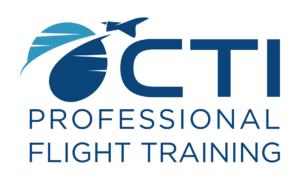How Pilot Pay Works
If you’re considering a career as a pilot you might be wondering how getting paid works. The way pilots get paid varies on a lot of factors. Some pay structures are simple, while others are complex. Things that determine how you get paid include the type of operation you work for, the equipment you fly, your position title, and longevity with the same employer. Most entry-level positions are paid by a yearly salary or hourly rate. Let’s take a deep dive into understanding how pilot pay works.
Typical Aviation Jobs & Compensation Structures
- Airline Pilots – Usually paid hourly using a pay rig system with a minimum monthly guarantee.
- Corporate Pilots – Typically paid as a yearly salary.
- Cargo Pilots – Usually use a pay rig system with a minimum hourly guarantee.
- Charter Pilots – Hourly rate with no guarantee of hours.
What is a Pilot Pay Rig?
A “rig” is a minimum credit a pilot earns for time spent working. The rig system has evolved over the years to provide pilots with protection so they can get compensated for being required to be available for work. Pilots working within a rig system are assigned work assignments as ‘trips.’ A trip can range from a single day to several weeks.
How a trip will pay depends on the specific rules a pilot works under, but is generally based on their time away from home, time spent on duty, or time flying. The rigs are based on ratios set in employment agreements.
Trip Rig Pay
Trip rig pay is based on time away from base. It begins when a pilot checks in for their trip and ends when they are released from duty to go home. Most employers have a pay based on rigs will use a 1:3 to 1:5 ratio. For example, if you fly a 4-day trip and are gone from base for a total of 78 hours, with a 1:4 ratio you would divide 78 by 4 for 19.5. Based on a trip rig you would earn 19.5 hours of pay for it.
Duty Rig Pay
Duty rig pay is based on time spent on duty while on a trip. When you’re gone on a trip you may be gone for several days. However, you’re only on duty and working for a portion of that time. You’ll be issued a hotel room for your required rest time. Most employers that pay on rigs use duty rigs with a 1:1.5 to 1:3 ratio. For example, on day one you work 8 hours, day two 12 hours, and day three 12 hours, and day four 10 hours. During the trip, you’d be on duty for 42 hours. With a 1:2 ratio, we would divide 42 by 2 for 21. You would earn 21 hours of pay for it.
Pilot Quality of Life
Most pilot employers will schedule their pilots to work at least the guaranteed pay each month of 60 to 80 hours. When the schedules are mostly paid based on time spent in the air, then a pilot will spend less time on the road and have more time off in the month. Employers that have larger airplanes that fly longer legs typically have better pilot schedules. Flying a widebody aircraft on international flights will get you the most time off each month.
